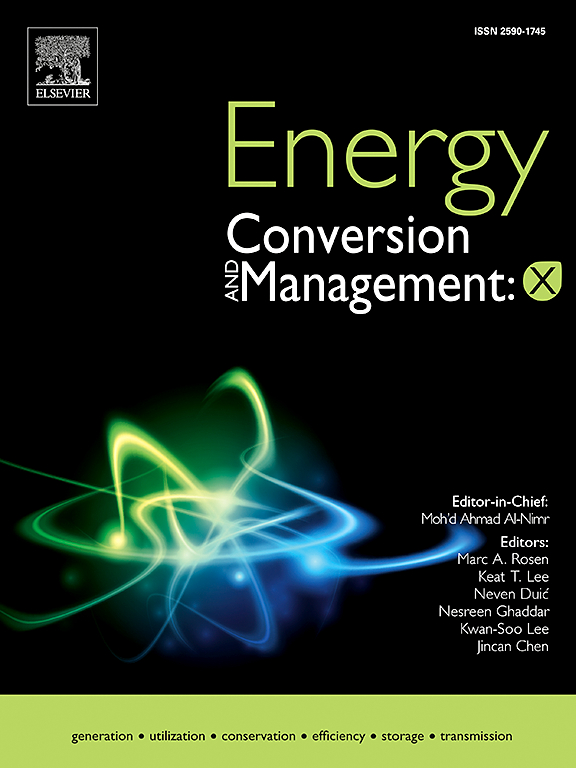Review of system design and operation control technology of supercritical CO2 power cycle
IF 9.9
1区 工程技术
Q1 ENERGY & FUELS
引用次数: 0
Abstract
The supercritical CO超临界CO2动力循环系统设计与运行控制技术综述
超临界CO2动力循环由于其较高的理论效率、强大的调峰能力、紧凑的组件和跨各种热源的通用性,最近受到了极大的关注。综述了超临界CO2动力循环的发展历程,并对超临界CO2动力循环的系统级设计和运行控制的研究现状进行了综合分析。系统设计部分比较了各种循环布置和轴布置方案,同时解释了独特设计方法的原因。阐述了系统设计参数优化的方法和过程。人们已经发现,仅将优化参数集中在设计点上,无法充分利用系统在多种条件下运行的潜力。因此,应考虑非设计点下的系统优化。运行控制部分介绍了建立必要的动态模型的方法,描述了在负荷跟随、冷热功率变化、系统启动和停机过程中所采用的控制策略。虽然目前的运行控制研究能够保证系统在各种条件下稳定高效地运行,但实现最优运行状态的控制策略尚未得到探索。因此,本文提出系统设计与运行控制之间存在相互依存关系,非设计点下的系统优化方法可以与运行控制策略相结合,以扩大超临界CO2发电系统在未来复杂场景下的应用潜力。
本文章由计算机程序翻译,如有差异,请以英文原文为准。
求助全文
约1分钟内获得全文
求助全文
来源期刊

Energy Conversion and Management
工程技术-力学
CiteScore
19.00
自引率
11.50%
发文量
1304
审稿时长
17 days
期刊介绍:
The journal Energy Conversion and Management provides a forum for publishing original contributions and comprehensive technical review articles of interdisciplinary and original research on all important energy topics.
The topics considered include energy generation, utilization, conversion, storage, transmission, conservation, management and sustainability. These topics typically involve various types of energy such as mechanical, thermal, nuclear, chemical, electromagnetic, magnetic and electric. These energy types cover all known energy resources, including renewable resources (e.g., solar, bio, hydro, wind, geothermal and ocean energy), fossil fuels and nuclear resources.
 求助内容:
求助内容: 应助结果提醒方式:
应助结果提醒方式:


